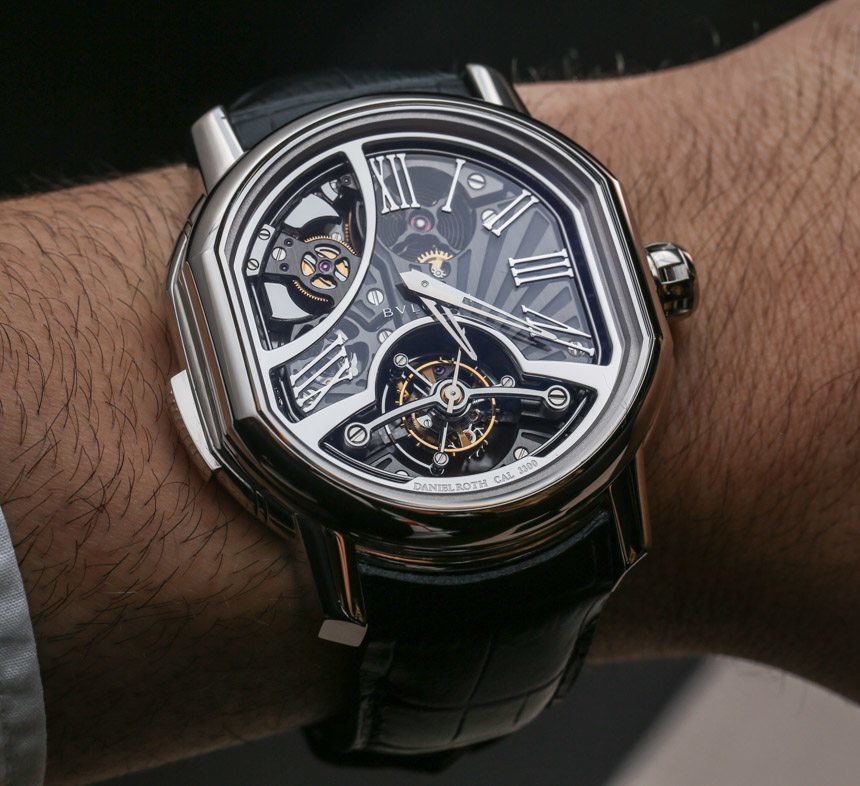
The Bulgari Daniel Roth Carillon Tourbillon Minute-Repeater is as complicated as it sounds – while the only guarantee to its striking looks is the Daniel Roth name. Daniel Roth and Gerald Genta are two highly acclaimed names in modern horology. The former is primarily known for his unusual (and unusually good) watch designs which merged classical aesthetic elements with unique stylistic details, spiced up with tourbillons, large apertures, retrograde hands, and other much-loved treats of high-end watchmaking.
The latter, Mr. Genta is praised as the designer of some genuinely iconic models such as the Audemars Piguet Royal Oak, the Patek Philippe Nautilus, IWC Ingenieur SL and a number of others, as well as his own, also uniquely styled watches. Since 2010, Bulgari has not only owned but quite literally taken over both trademarks and companies, offering Bulgari Daniel Roth and Bulgari Gerald Genta timepieces. Ariel was at the SIAR 2014 watch expo in Mexico and went hands-on with the Bulgari Daniel Roth Carillon Tourbillon watch – so let’s see it in more detail.
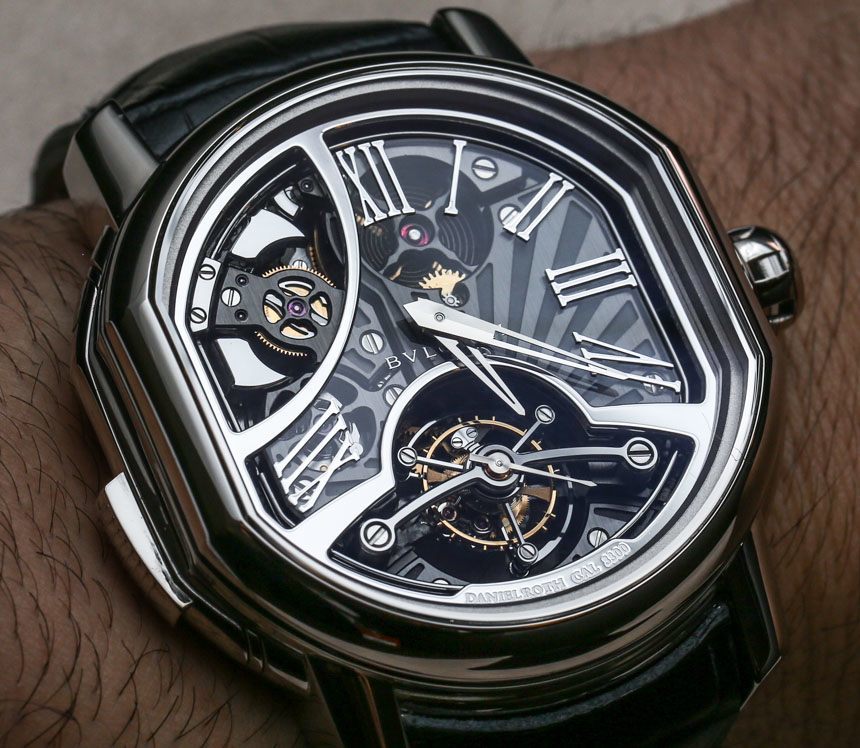
The looks of the watch are undeniably “Daniel Roth,” with the hexagonal, albeit at some points beautifully curved case and short, straight lugs. What really sets this design off, however, is that the movement – visible through the large openings and the see-through, sapphire dial – follows the shape of the bezel. It is not a round or square movement thrown into a more unusual looking case but something that was designed specifically to fit this masculine, yet classic shape.
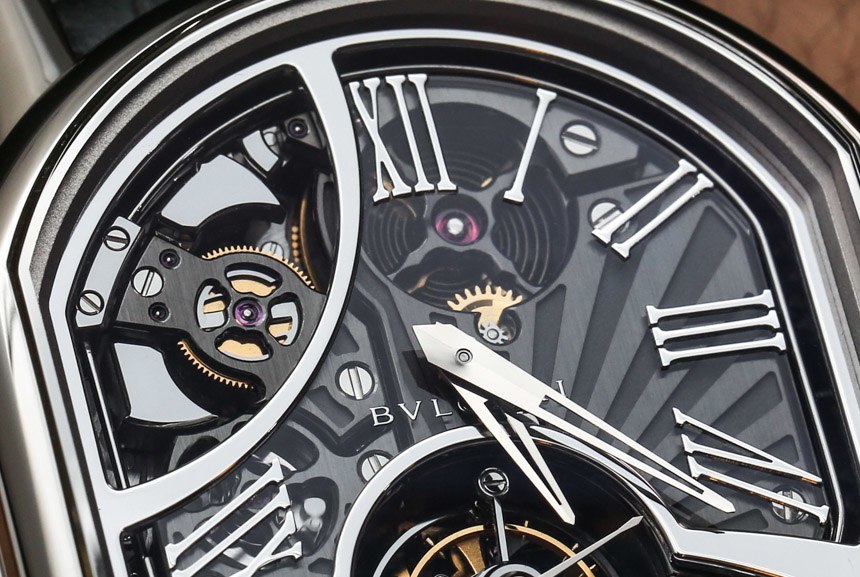
Sure, the hands are quite short, but then again, more than half of the indices are missing, having been sacrificed for the sake of substantially sized apertures, showing off some of the key features of this highly complicated creation. Perhaps the most interesting – and more scarcely encountered – of the two openings is the one located in the top left corner, reserved to display the three hammers of the carillon chiming mechanism.
Traditionally, the carillon was a musical chiming instrument that comprised cast bronze bells which were serially played so as to create a melody. By contrast, the traditional minute repeater is composed of two hammers and gongs, allowing it to play a low note for the hours, a low-high note for quarters and the high note for minutes – not much of a melody is offered there. In the case of this Bulgari Daniel Roth Carillon Tourbillon Minute-Repeater, the term carillon is used to refer to the very special minute repeater complication that uses not two, but rather three hammers and gongs.
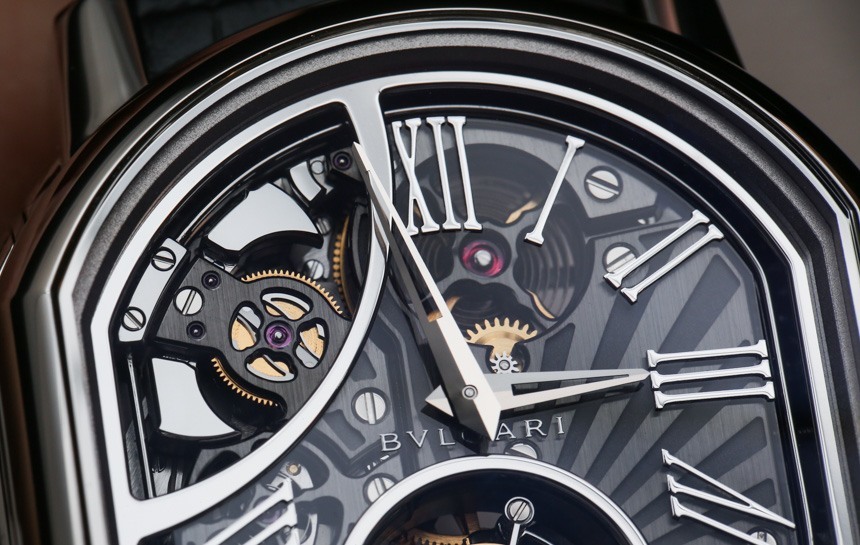
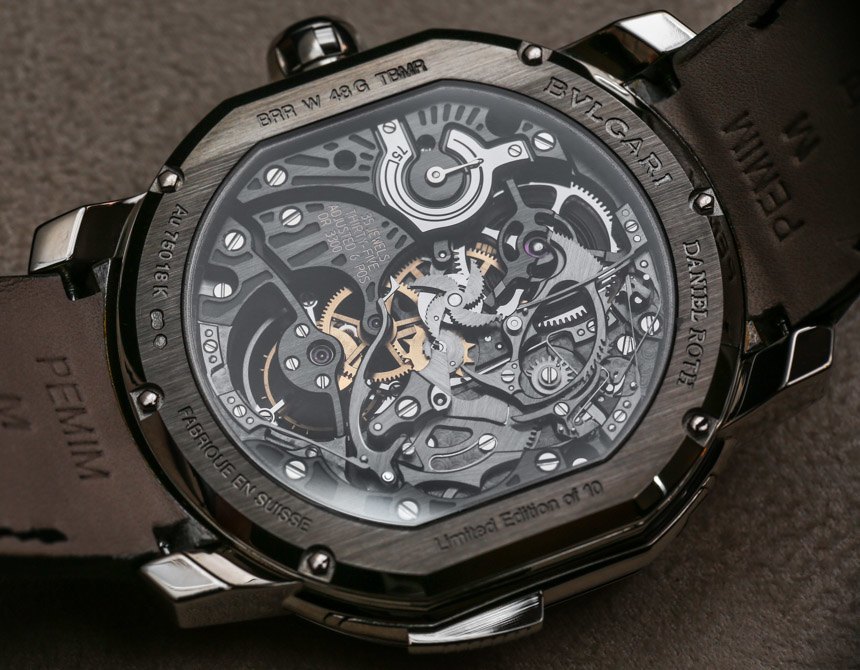
See the two hammers in the upper left corner of the dial? Upon closer inspection, a smaller, third hammer becomes visible, responsible for creating the high note. Where the melody literally comes into play is when the repeater chimes the quarters: it plays the usual low notes for the hours and the high notes for the minutes, but it operates all three hammers for the quarters, sounding off the high-mid-low (E-D-C) notes in that particular order for every full quarter passed since the hour began.
That circular part with the gold colored wheel displayed under the skeletonized bridge just by the two hammers is called the governor, and it is a key component of just about any repeater watch: in perfect harmony with its name, the governor’s duty is to ensure that every single chime follows the previous in a timely manner, and that the individual chimes are not all over the place, ruining the musicality of the complication.
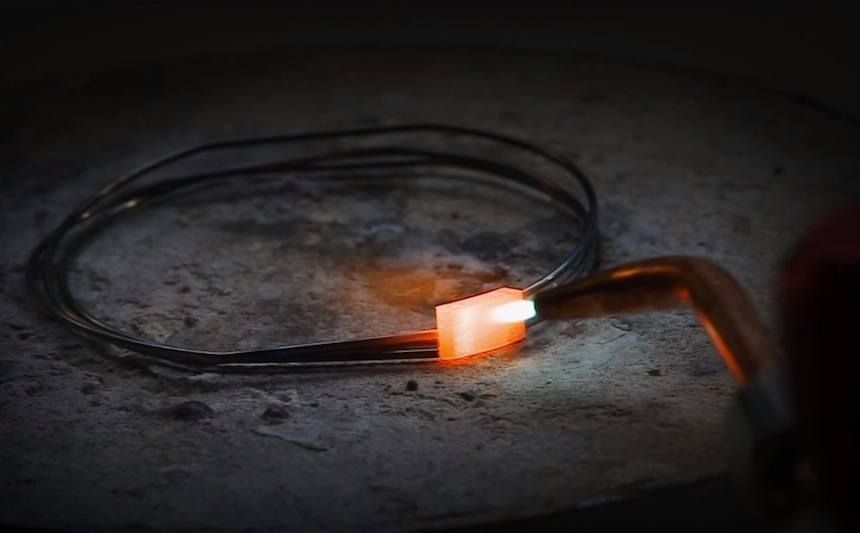
Last but not least, the gongs have been shaped in a way that they flow with the shape of the case and the movement to ensure that they provide a rich sound – which must be taken with a substantial pinch of salt, as despite the awe-inspiring technical complexity of chiming watches, the sound many of them actually produces is underwhelming. Bulgari claims that this Bulgari Daniel Roth Carillon Tourbillon Minute-Repeater contains an in-house made movement, and that the gongs are heated to 900 and 500 degrees Celsius to achieve the best clarity and resonance.
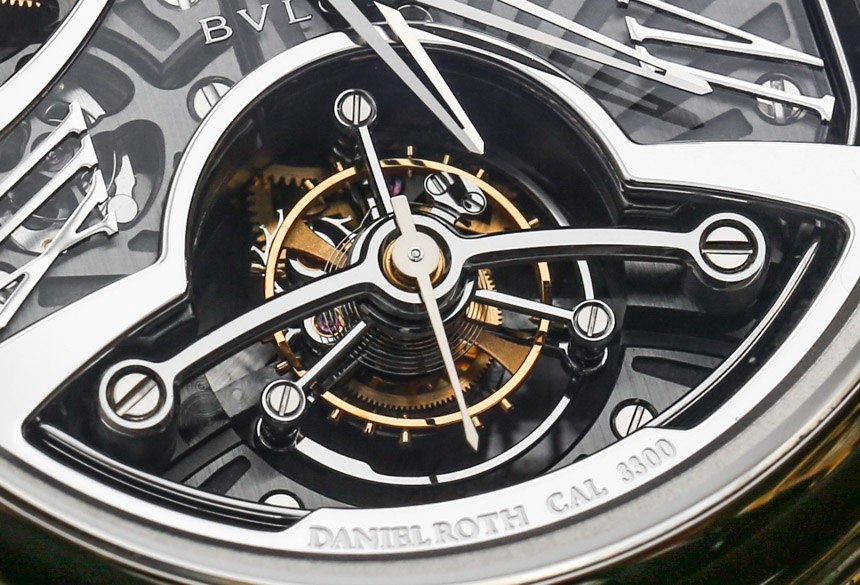
“But wait, there’s more!” – we could say. Sure enough, the Carillon Tourbillon makes it no secret that it comes equipped with another seemingly ever-green complication: a one-minute tourbillon. Also unashamedly exposed on the dial side, the tourbillon is held in place with a hand-crafted bridge that secures it from the top, and it is built around a more traditional-looking, albeit rather large (13 millimeter wide) three-spoke carriage.
The result is, of course, an incredibly detailed look that should make most WIS feel weak in the knees. It is nice to see how Bulgari pays tribute to Daniel Roth with the slim frame of the dial bearing the “Daniel Roth Cal 3300” designation. A rather weird design choice, though, is the 8 o’clock index in (non-existing) Roman numerals: the number 8 is actually marked by “IIX,” as opposed to the correct “VIII” we have grown used to seeing. It is as though the face of the dial had two 12 o’clock markers, although this little play with the indices does tend to get lost amidst all the eye-candy, provided by the cut-outs, the sapphire dial, and the modern starburst finish on the top plate of the movement.
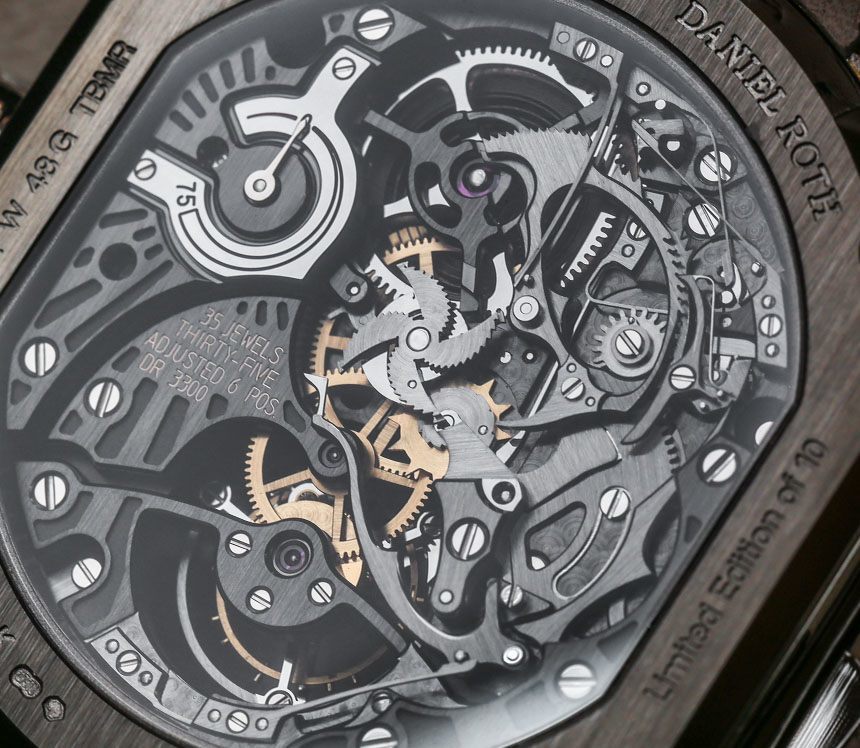
The case back is of no disappointment: it delivers the “mechanical metropolis” look. The wheels, bridges, levers, cams, snails, and just simply the different layers of it do remind us of a crazy steam-punk inspired city – on a miniature scale. For watchnerds, there are a few interesting details to spot. First, discover the remarkable simplicity of the going train between the mainspring and the tourbillon. The mainspring (at the top center of the movement on the image above) and the tourbillon (at the center, in the bottom) are connected by a series of three wheels which are laid out in a linear fashion; as literally straight-forward as can be.
The minute repeater, on the other hand, is beautifully complicated. On a more personal note, I will say that previously I have set myself the challenge of creating a minute repeater (in my mind, that is). I mean, an interesting way of realizing how complicated of a task that is, just imagine that you had to create something completely mechanical, that would keep track of time and could count the hours, quarters, and minutes at any given moment, on demand. Over the course of a few years I guess I could end up with a minute repeater the size of a smaller room – but one that would fit on a wristwatch?
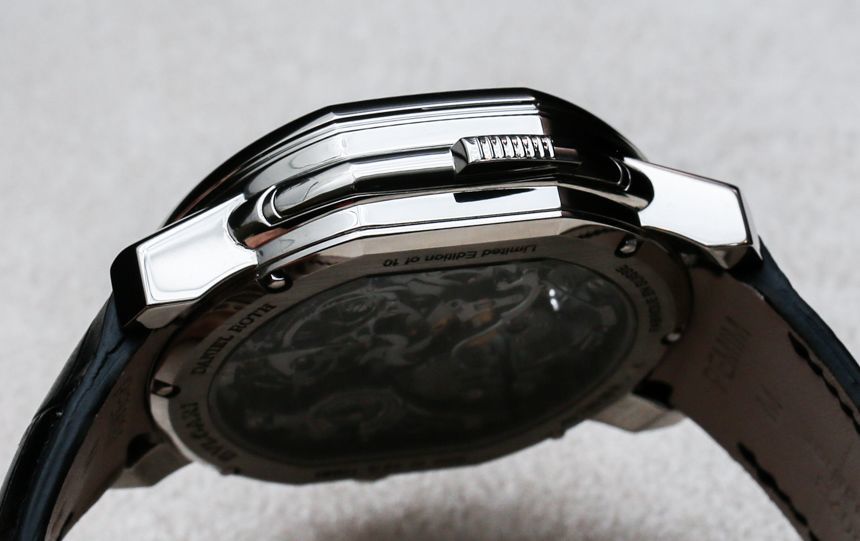
Luckily, we need not invent this complication – it’s already out there. The hand-wound Bulgari DR3300 caliber offers this function, thanks to a harmonious co-operation of 327 hand-finished components. The movement runs on 3 Hertz and offers 75 hours of power reserve – it even has a power reserve indicator located on the back of the watch.
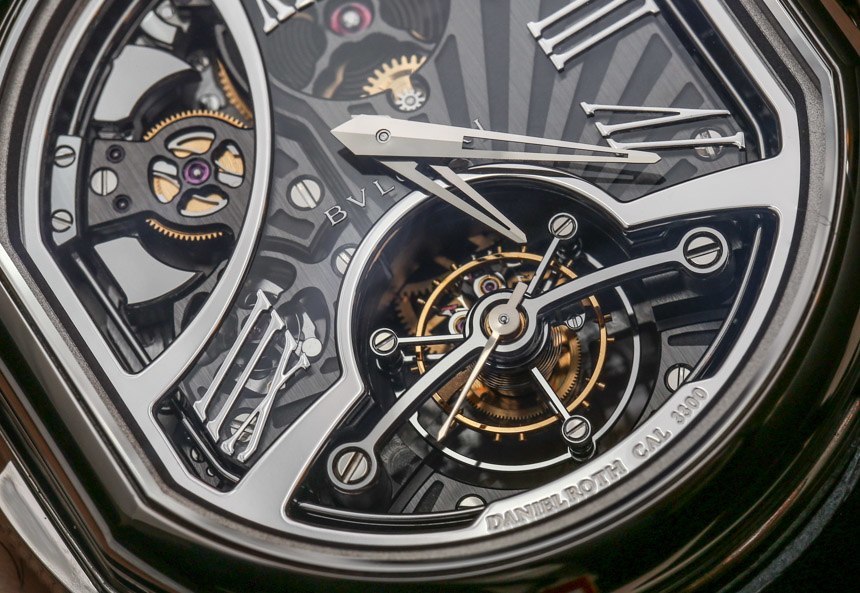
The Bulgari Daniel Roth Carillon Tourbillon Minute-Repeater brings little new to the table – in essence, it features complications that we have of course seen before. What sets it apart from the rest is the way it looks and, more important, the surprisingly high level of attention to detail that Bulgari expressed here. Sure, such super high-end timepieces are first and foremost supposed to work as “marketing halos,” bringing the provenance of the brand in question to the greater masses, in an effort to legitimize its somewhat more accessible other offerings – like the Bulgari Octo, for example.
The Bulgari Daniel Roth Carillon Tourbillon Minute-Repeater as seen here, in 18k white gold is a limited edition of 30 pieces and is priced at $269,000 each. bulgari.com
